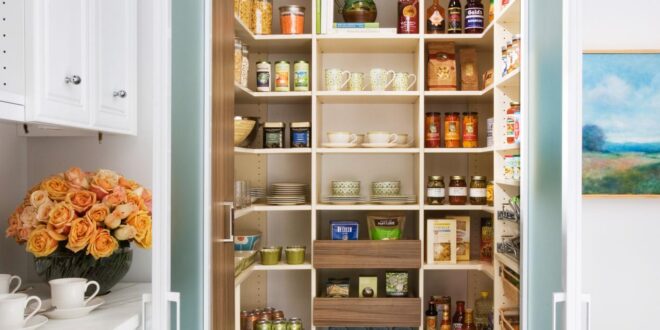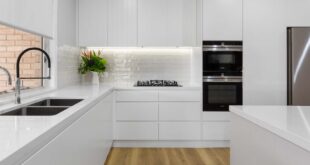The Allure of the Walk-In Pantry: More Than Just Storage
Let’s face it, the kitchen is the heart of the home. It’s where culinary magic happens, family memories are made, and, let’s be honest, where a whole lot of clutter tends to accumulate. One of the most effective solutions to conquering kitchen chaos? The coveted walk-in pantry. But it’s not just about having a large space; it’s about how you design and organize it. A well-planned walk-in pantry transforms from a simple storage area into an organized, efficient, and even beautiful extension of your kitchen.
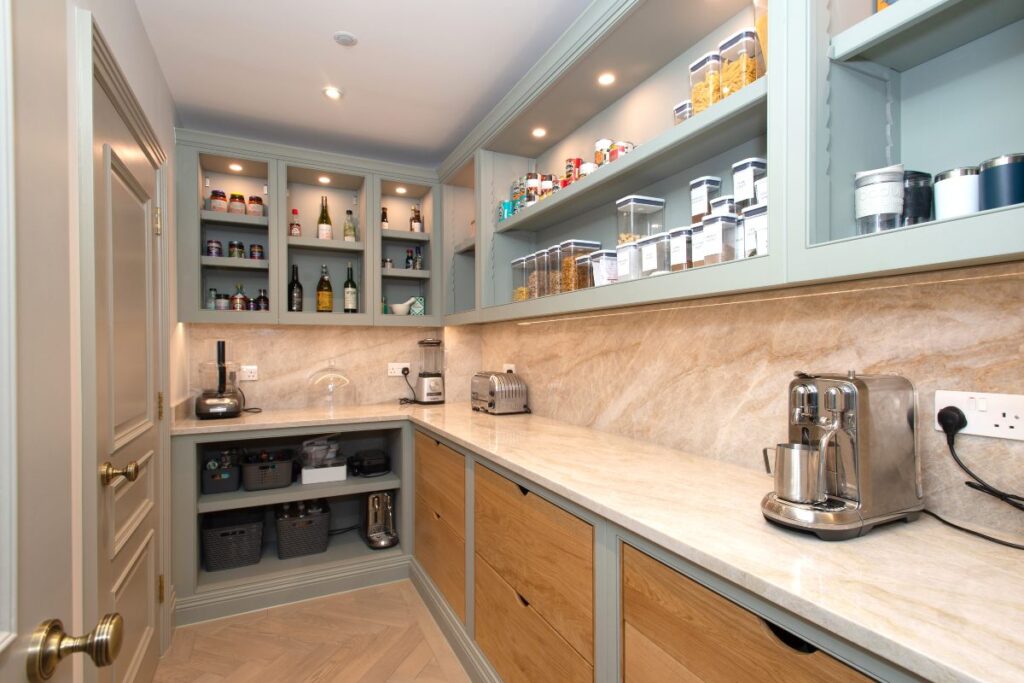
Forget rummaging through overflowing cabinets, struggling to find that elusive spice, or discovering expired cans lurking in the back. A walk-in pantry, when done right, offers unparalleled convenience and accessibility. It allows you to keep all your food items neatly organized, easily visible, and readily available whenever inspiration strikes or hunger pangs hit.
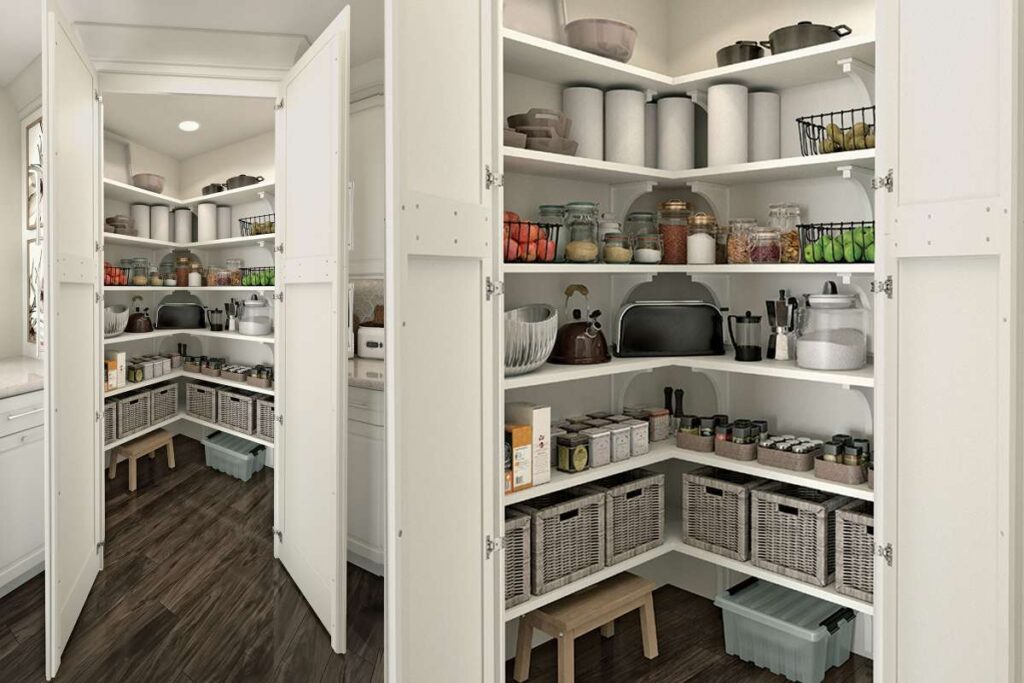
Why Choose a Walk-In Pantry Over Other Storage Options?
While pull-out shelves and cabinet organizers are helpful, they often fall short of providing the expansive storage and organizational potential of a dedicated walk-in pantry. Here’s why it reigns supreme:
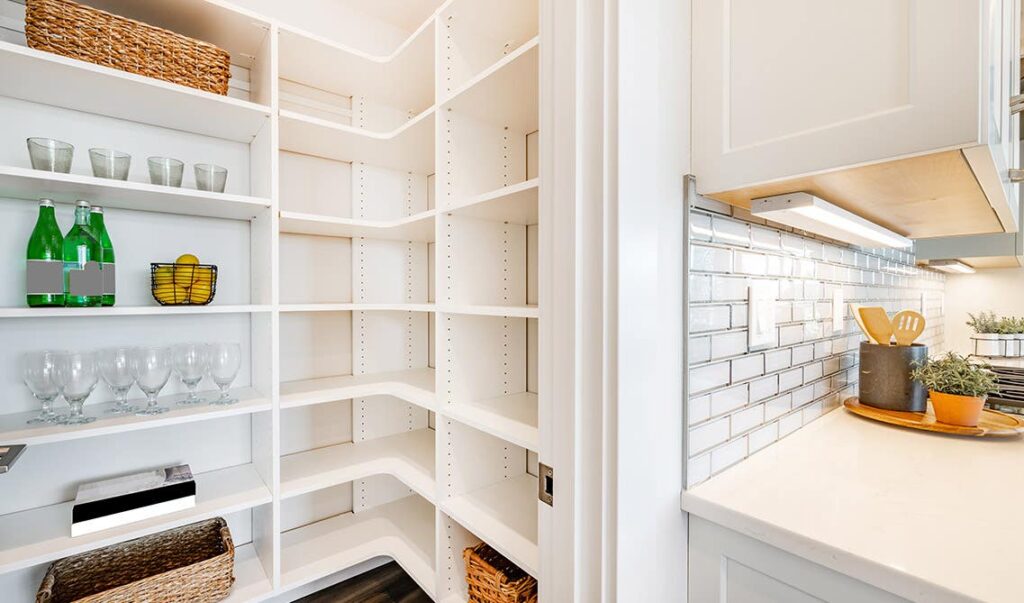
- Superior Storage Capacity: Walk-in pantries offer significantly more storage space compared to traditional cabinets or even reach-in pantries. You can store everything from canned goods and dry ingredients to small appliances, cookbooks, and even serving dishes.
- Improved Organization: The open layout of a walk-in pantry makes it easier to categorize and organize your food items. You can create designated zones for different types of products, ensuring everything has its place and is easily accessible.
- Enhanced Visibility: With everything neatly arranged and within easy reach, you can quickly see what you have on hand, reducing food waste and saving money. No more forgotten ingredients hiding in the back of dark cabinets!
- Aesthetic Appeal: A well-designed walk-in pantry can be a visually appealing addition to your kitchen. With thoughtful shelving, lighting, and decor, it can become a beautiful and functional space that you’ll actually enjoy using.
- Bulk Buying Benefits: A spacious walk-in pantry allows you to take advantage of bulk buying opportunities, saving you money on frequently used items. Stock up on those family favorites without worrying about where to store them.
Planning Your Dream Walk-In Pantry: Key Considerations
Before diving headfirst into designing your walk-in pantry, it’s crucial to consider several factors to ensure it meets your specific needs and complements your kitchen’s overall style.
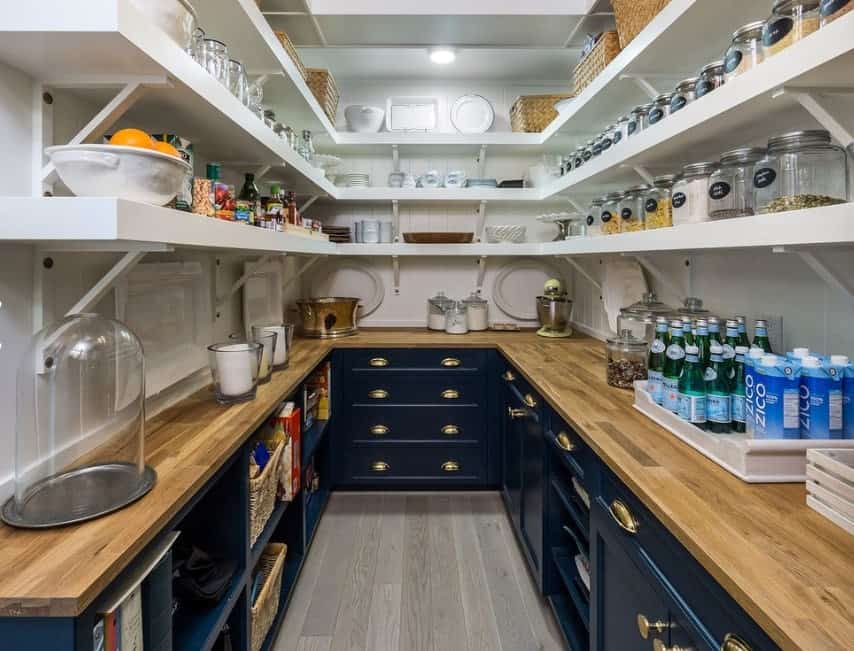
1. Space Availability & Layout
The size and shape of your available space will significantly influence your pantry’s design. Consider the following:
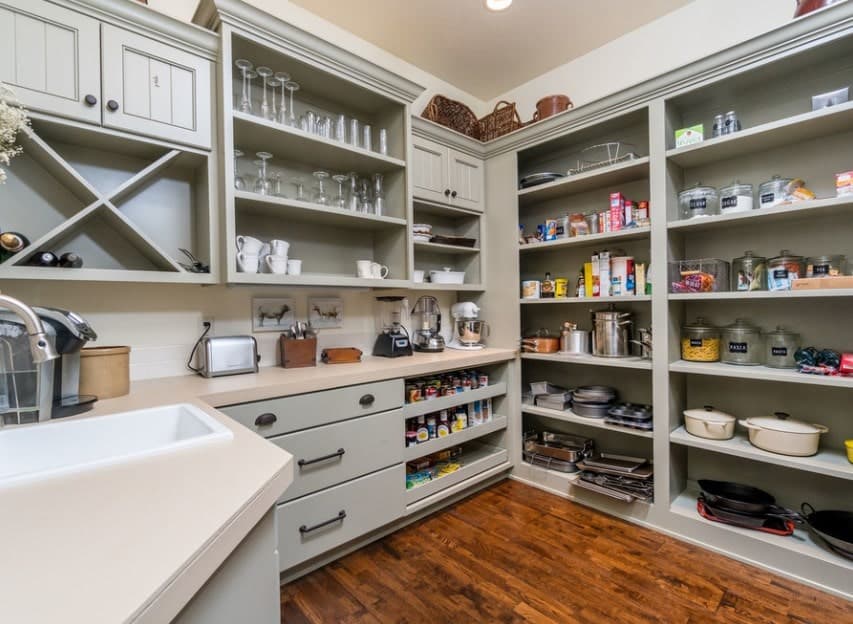
- Dedicated Room: If you’re lucky enough to have a spare room or a large nook, you can create a spacious walk-in pantry with ample storage.
- Underutilized Closet: An unused closet can be transformed into a functional walk-in pantry with the right shelving and organization system.
- Kitchen Extension: If you’re renovating your kitchen, consider incorporating a walk-in pantry into the design. Even a small addition can make a big difference.
Think about the layout. A U-shaped or L-shaped pantry typically offers the most storage space, while a straight, narrow pantry might require more creative organization solutions. Remember to leave enough space to comfortably move around and access your items.
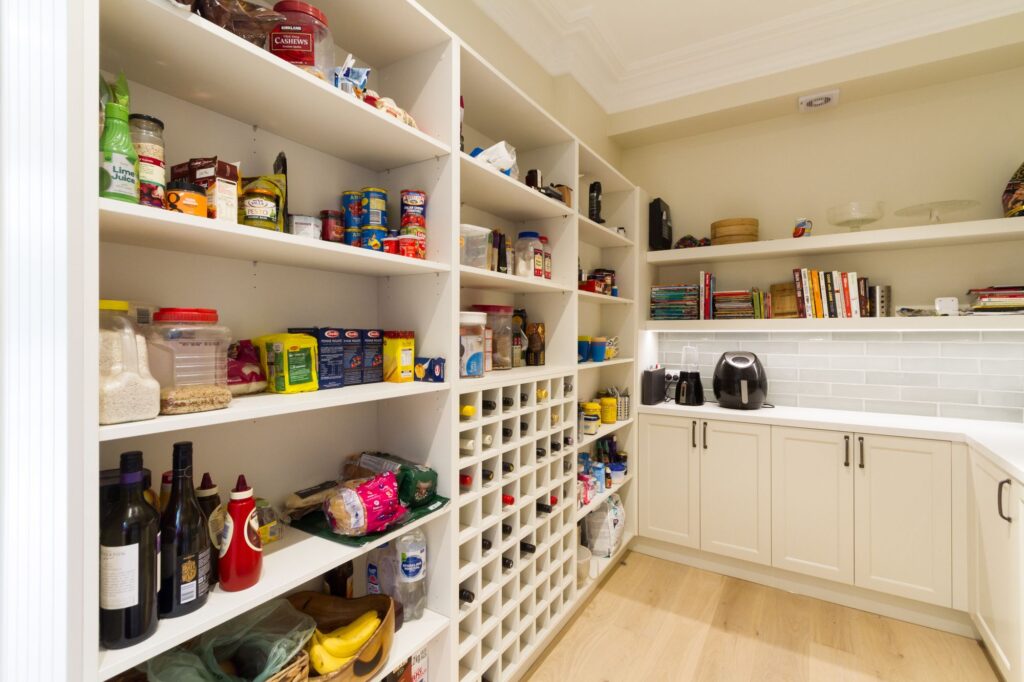
2. Shelving: The Backbone of Your Pantry
Shelving is the most crucial element of any walk-in pantry. Choose shelving that is durable, adjustable, and aesthetically pleasing.
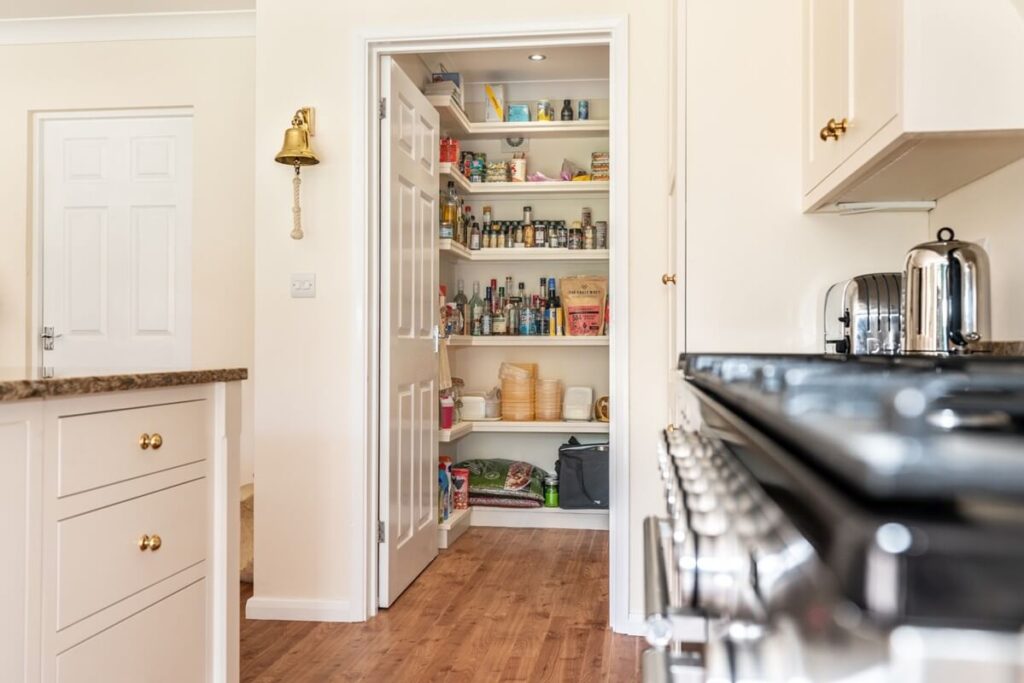
- Material Matters: Common shelving materials include wood, wire, and laminate. Wood shelving offers a classic and elegant look, while wire shelving is more affordable and allows for better air circulation. Laminate shelving is durable and easy to clean.
- Adjustable Shelves: Opt for adjustable shelving so you can customize the height to accommodate different items. This is essential for maximizing vertical space and preventing wasted space.
- Shelf Depth: Consider the depth of your shelves based on the items you plan to store. Deeper shelves are ideal for larger items, while shallower shelves are better for smaller items.
- Corner Shelves: Don’t forget about the corners! Corner shelves or lazy Susans can help you utilize those often-wasted spaces.
3. Lighting: Illuminating Your Culinary Treasures
Proper lighting is essential for a functional and visually appealing walk-in pantry. You need to be able to easily see what you have on hand, especially in the back corners.
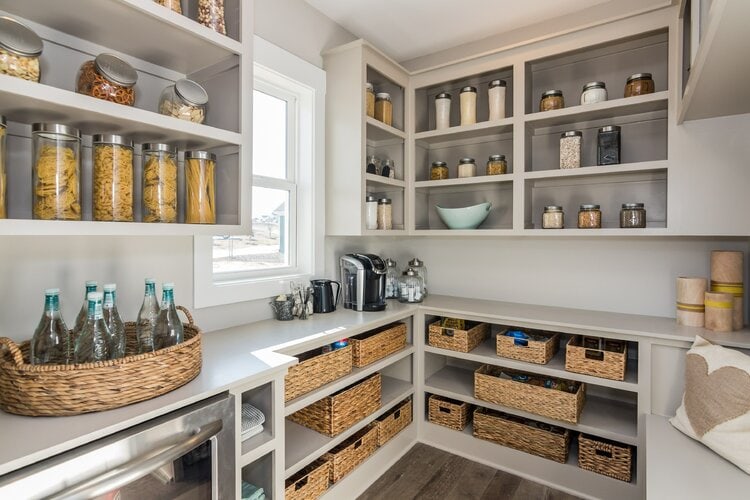
- Recessed Lighting: Recessed lighting provides even illumination throughout the pantry.
- Under-Cabinet Lighting: Under-cabinet lighting can highlight specific areas and make it easier to find items on lower shelves.
- Pendant Lighting: A pendant light can add a touch of style and provide additional illumination.
- Motion-Activated Lights: Consider motion-activated lights for energy efficiency and convenience.
4. Ventilation: Keeping Things Fresh
Proper ventilation is crucial for preventing mold and mildew growth in your pantry. Ensure there is adequate airflow to keep your food items fresh.
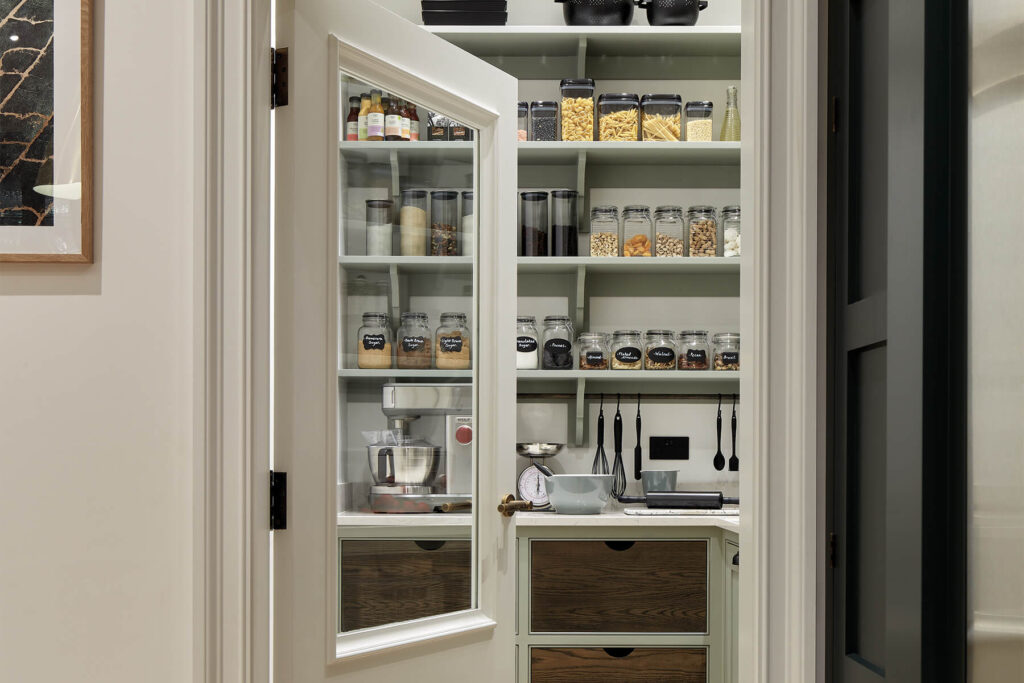
- Natural Ventilation: If possible, include a window or vent in your pantry to allow for natural ventilation.
- Exhaust Fan: Install an exhaust fan to remove excess moisture and odors.
- Dehumidifier: In humid climates, consider using a dehumidifier to maintain a dry environment.
5. Style & Aesthetics: Making it Your Own
Your walk-in pantry should complement your kitchen’s overall style and reflect your personal taste. Consider the following:
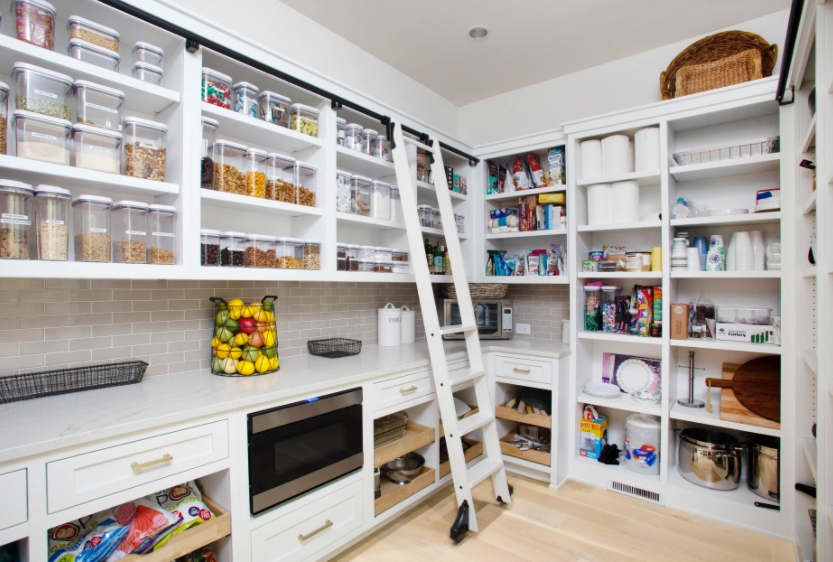
- Color Palette: Choose a color palette that is consistent with your kitchen’s decor. Light and airy colors can make the pantry feel more spacious.
- Hardware: Select hardware that complements your cabinets and other kitchen fixtures.
- Decor: Add personal touches with decorative baskets, canisters, and artwork.
Organization Strategies: Taming the Pantry Beast
Even the most beautifully designed walk-in pantry can quickly become disorganized if you don’t have a solid organization system in place. Here are some effective strategies to keep your pantry in tip-top shape:
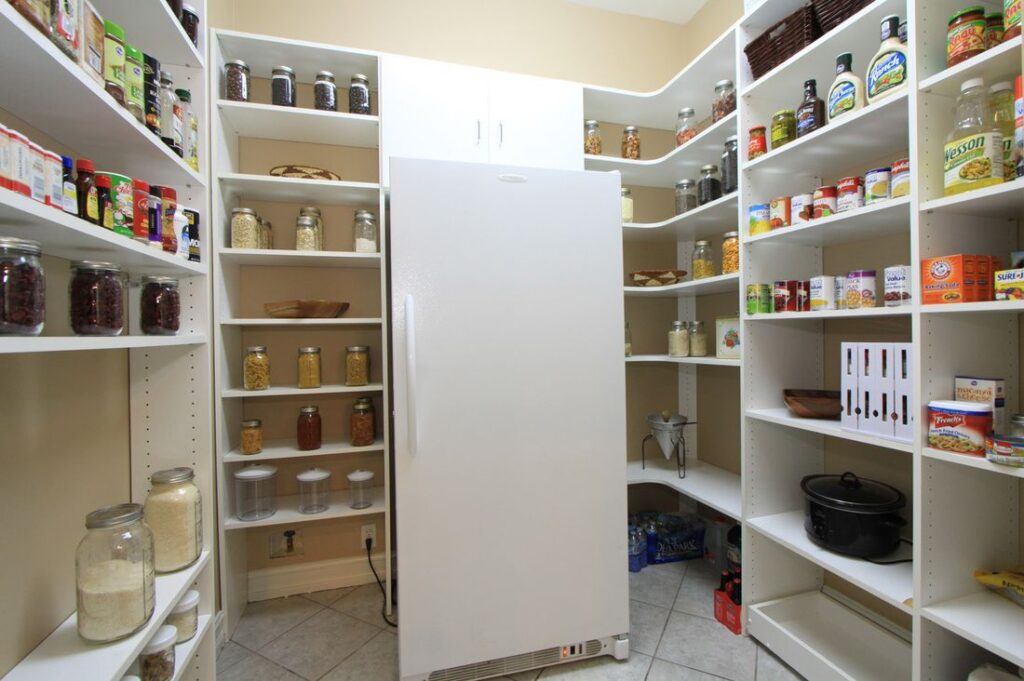
1. Categorize & Zone: Creating Designated Areas
Divide your pantry into designated zones for different types of food items. This will make it easier to find what you need and prevent items from getting lost in the shuffle.
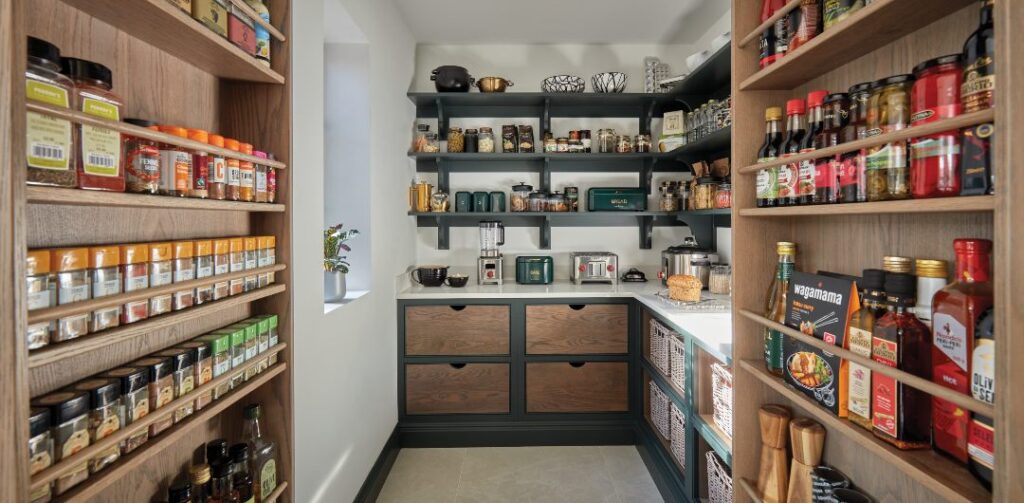
- Canned Goods Zone: Dedicate a specific area for canned goods, organizing them by type (vegetables, fruits, soups, etc.).
- Dry Goods Zone: Create a zone for dry goods like pasta, rice, flour, sugar, and cereal.
- Snack Zone: Designate a snack zone for quick and easy access to snacks. This is especially helpful for families with children.
- Baking Zone: Keep all your baking supplies together in a dedicated baking zone.
- Breakfast Zone: If you eat breakfast at home, create a breakfast zone with cereal, oatmeal, coffee, and tea.
2. Containerize: The Key to Visual Appeal & Freshness
Transfer dry goods from their original packaging into airtight containers. This will not only keep your food fresher but also create a more visually appealing and organized pantry.
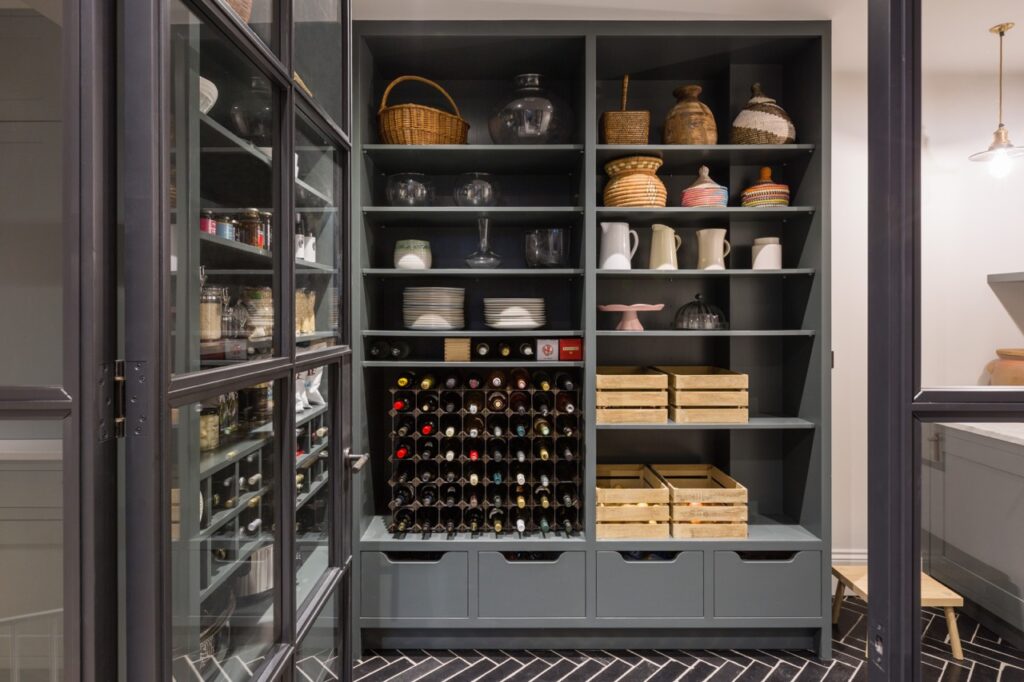
- Clear Containers: Opt for clear containers so you can easily see what’s inside.
- Label Everything: Label all your containers with the contents and expiration date.
- Stackable Containers: Choose stackable containers to maximize vertical space.
- Matching Containers: Using matching containers will create a cohesive and organized look.
3. Utilize Vertical Space: Thinking Upwards
Don’t let valuable vertical space go to waste! Use shelving, drawers, and hanging organizers to maximize storage from floor to ceiling.
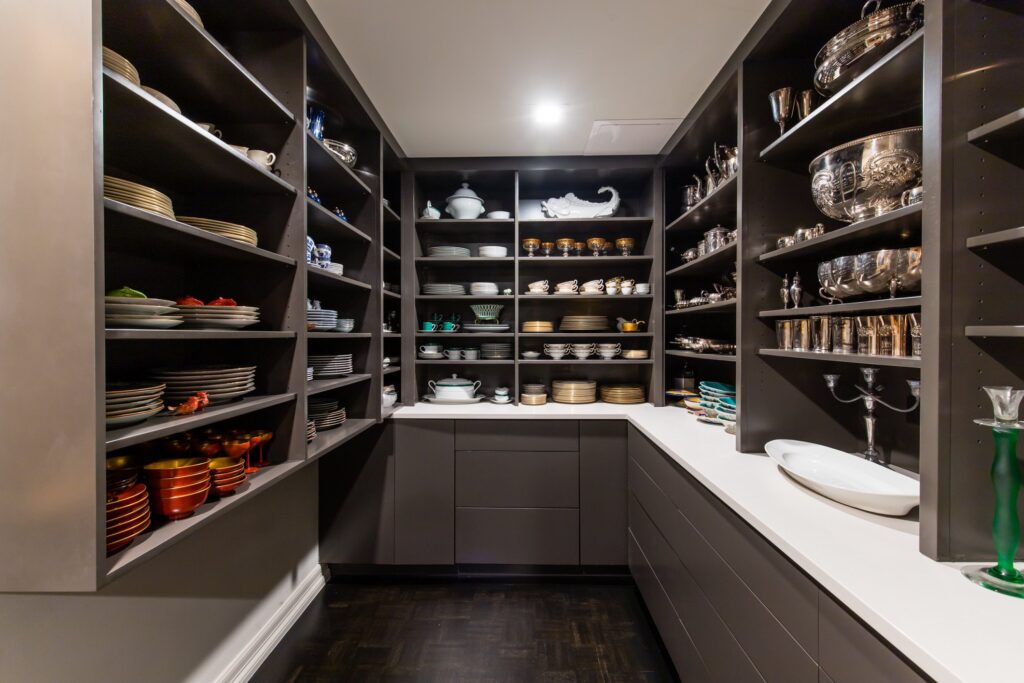
- Tall Shelves: Install tall shelves to store large items like cereal boxes and serving platters.
- Pull-Out Drawers: Pull-out drawers are great for storing smaller items like spices and condiments.
- Hanging Organizers: Use hanging organizers to store aprons, pot holders, and other kitchen accessories.
- Shelf Risers: Use shelf risers to create additional levels of storage on your shelves.
4. First In, First Out (FIFO): Preventing Food Waste
Implement the FIFO method to ensure you’re using older food items before they expire. When adding new items to your pantry, place them behind the older ones.
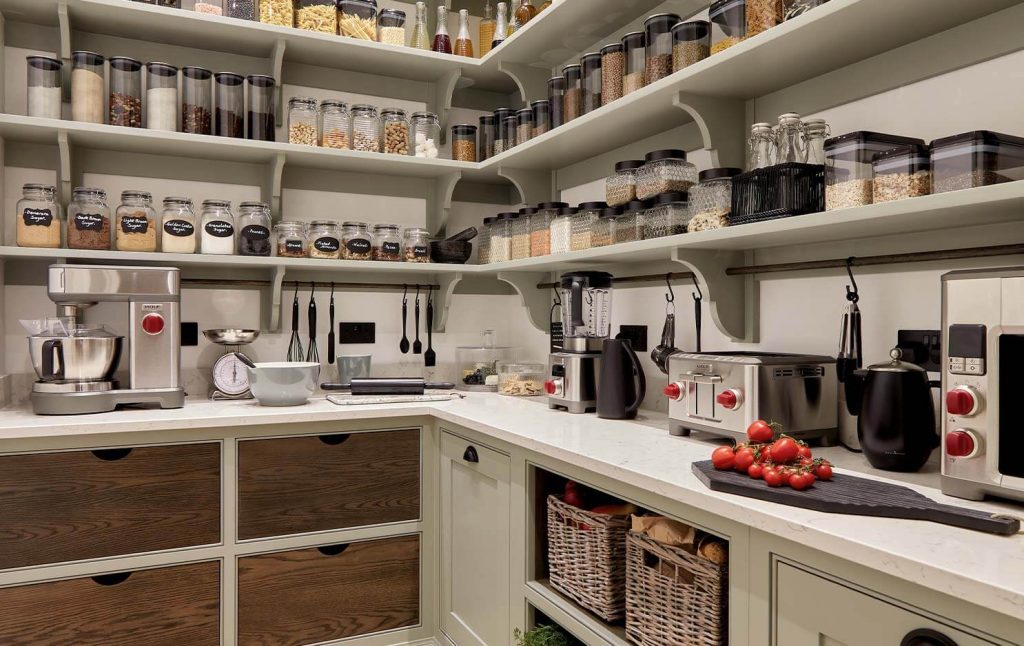
- Rotate Your Stock: Regularly check your pantry for expired items and discard them.
- Label Expiration Dates: Clearly label all your food items with their expiration dates.
- Use Clear Containers: Clear containers make it easier to see what you have and prevent items from being forgotten.
5. Regular Maintenance: Keeping it Tidy
Make it a habit to regularly declutter and reorganize your pantry. This will prevent it from becoming overwhelmed and ensure everything stays in its place.
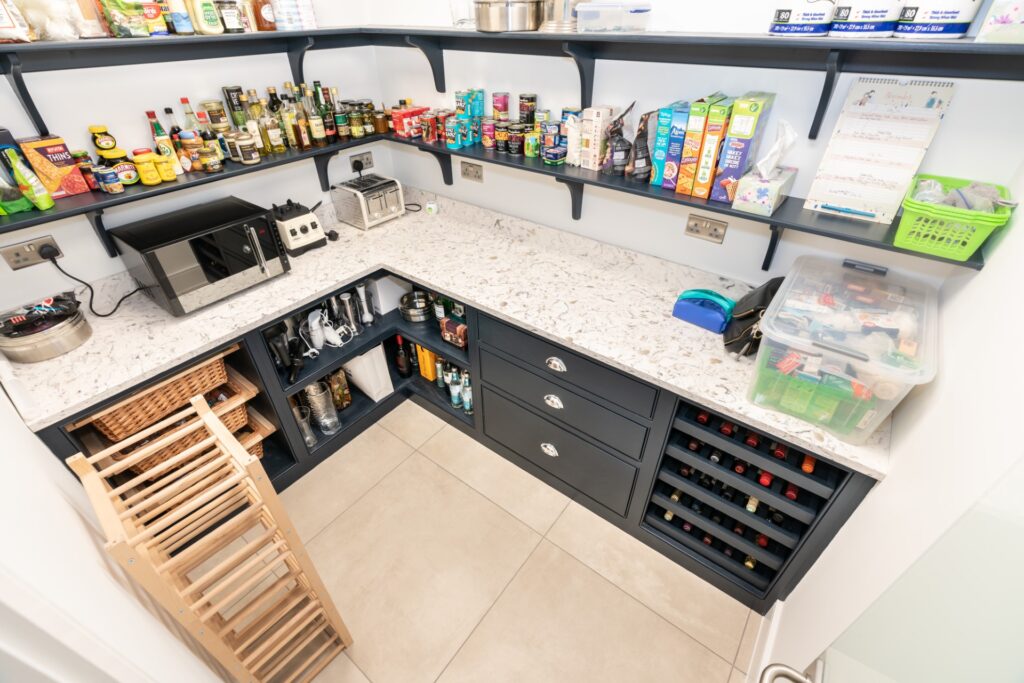
- Monthly Clean-Out: Schedule a monthly clean-out to remove expired items and wipe down shelves.
- Reorganize as Needed: Reorganize your pantry as needed to accommodate new items and changing needs.
- Involve the Family: Get the whole family involved in keeping the pantry organized.
Walk-In Pantry Design Ideas: Inspiration for Your Space
Need some inspiration for your walk-in pantry design? Here are a few ideas to get you started:
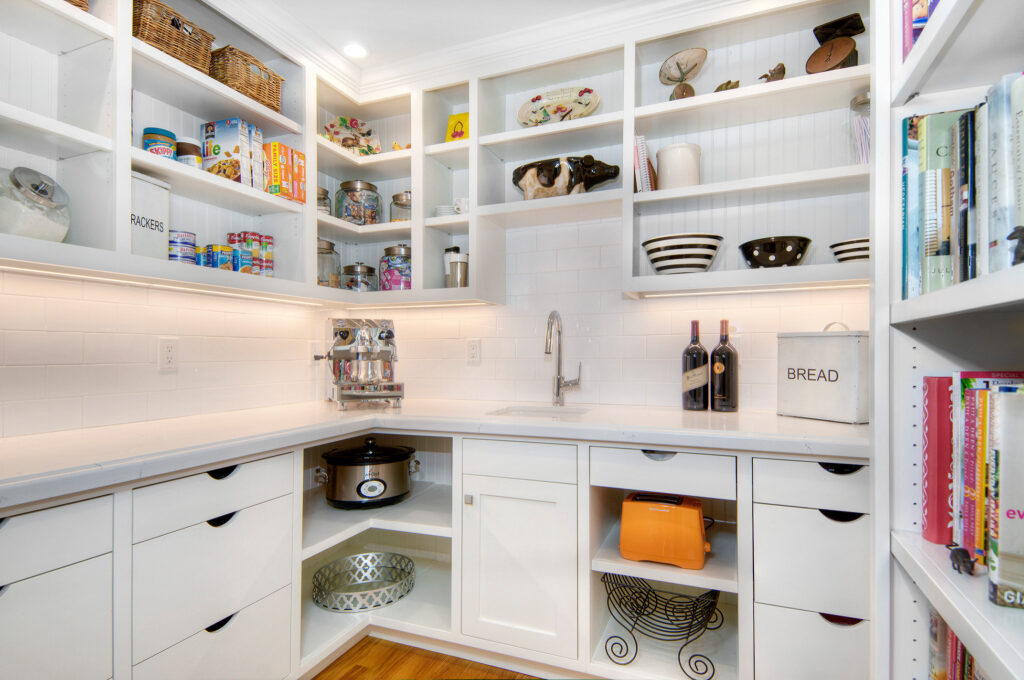
1. The Modern Farmhouse Pantry
This design combines rustic charm with modern functionality. Features include:
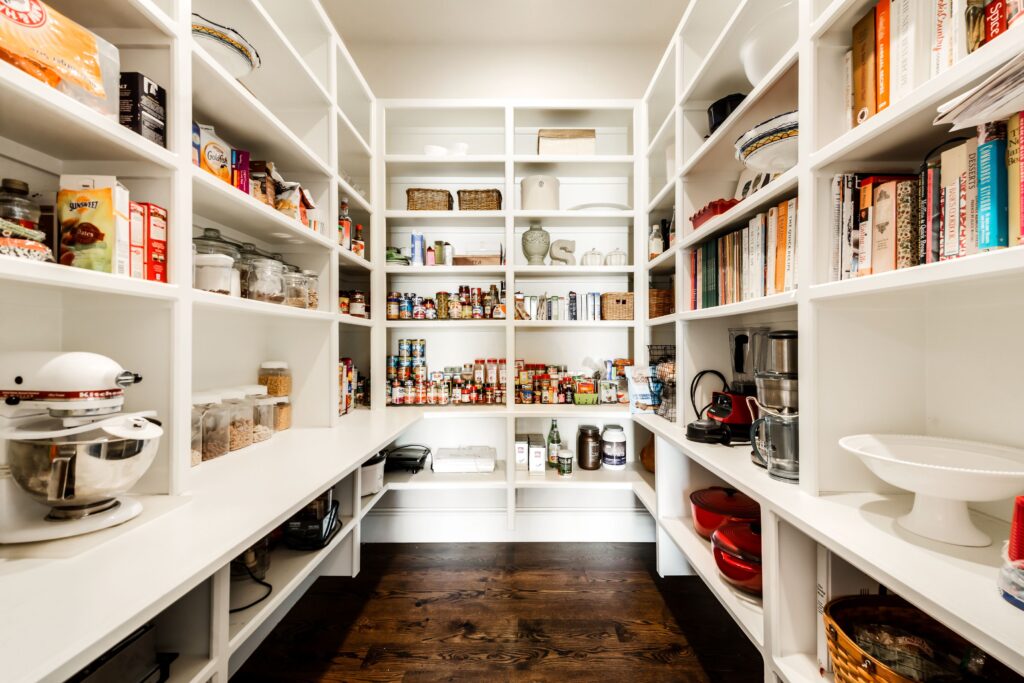
- Open shelving made of reclaimed wood
- Wire baskets for storing produce and snacks
- Mason jars for storing dry goods
- A chalkboard wall for writing grocery lists
- Neutral color palette with pops of color
2. The Sleek & Minimalist Pantry
This design focuses on clean lines and simplicity. Features include:
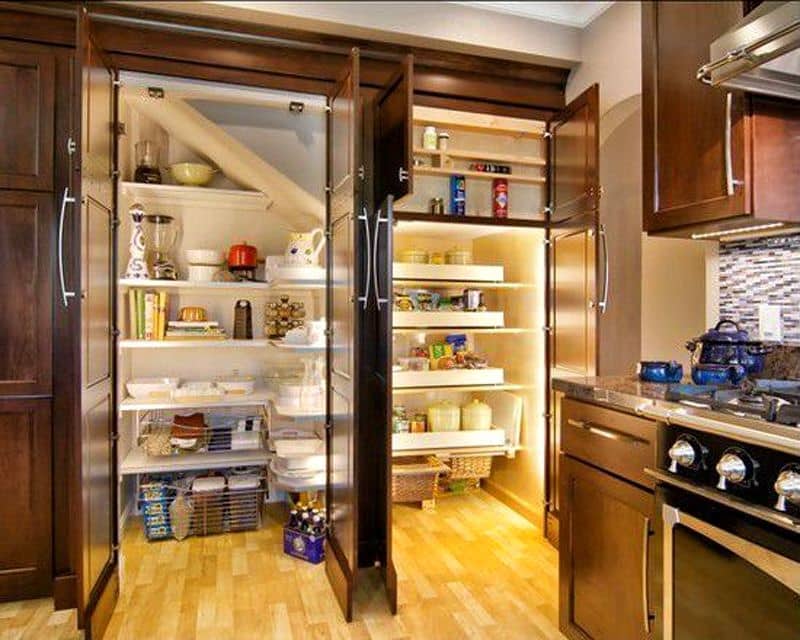
- White laminate shelving
- Clear acrylic containers
- Hidden lighting
- Pull-out drawers with soft-close mechanisms
- Minimalist decor
3. The Colorful & Eclectic Pantry
This design embraces bold colors and unique decor. Features include:
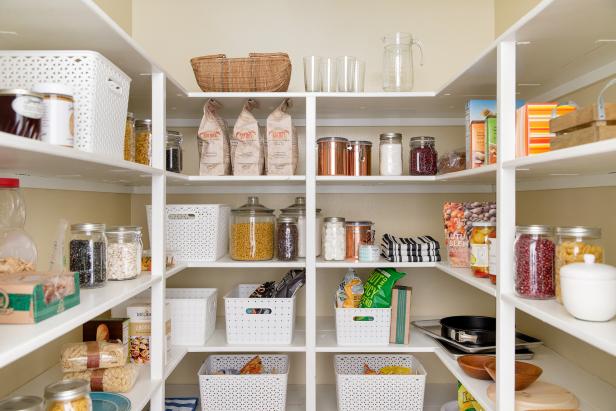
- Shelves painted in vibrant colors
- Vintage canisters and jars
- Patterned wallpaper or tiles
- Fun and quirky decor
- A mix of textures and materials
4. The Butler’s Pantry Inspired Design
Extending beyond just food storage, this leans into a small service and prep area. Features include:
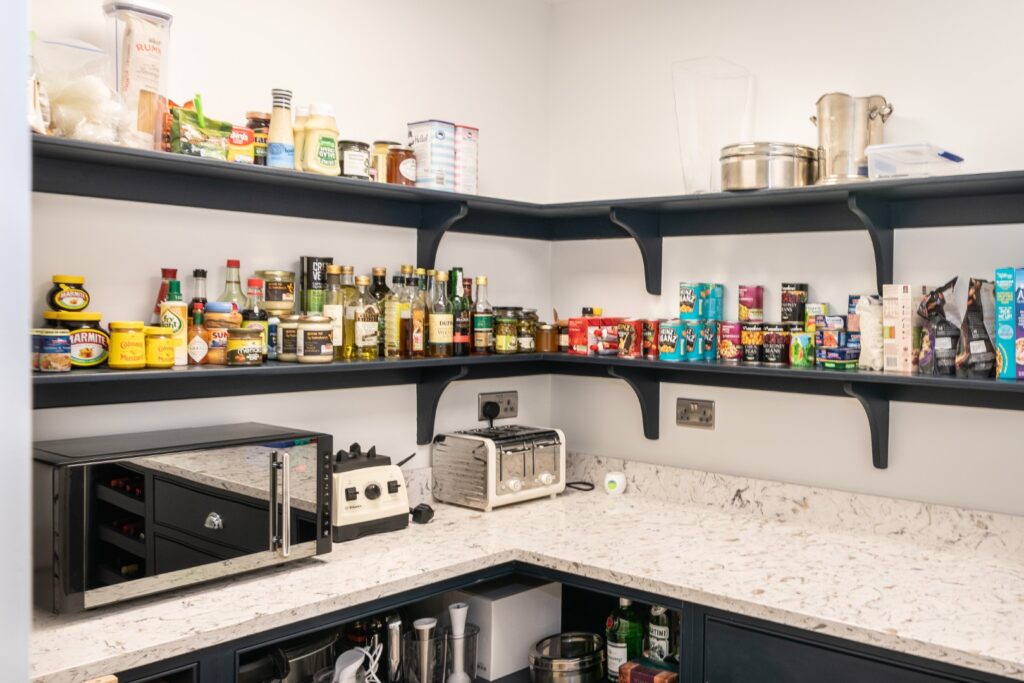
- Counter space for small appliance usage
- A small sink
- Glass-front cabinets showcasing fine dishware
- Wine storage racks
- Integrated cutting boards
DIY vs. Professional Installation: Which is Right for You?
Deciding whether to DIY your walk-in pantry or hire a professional installer depends on your skill level, budget, and time constraints.
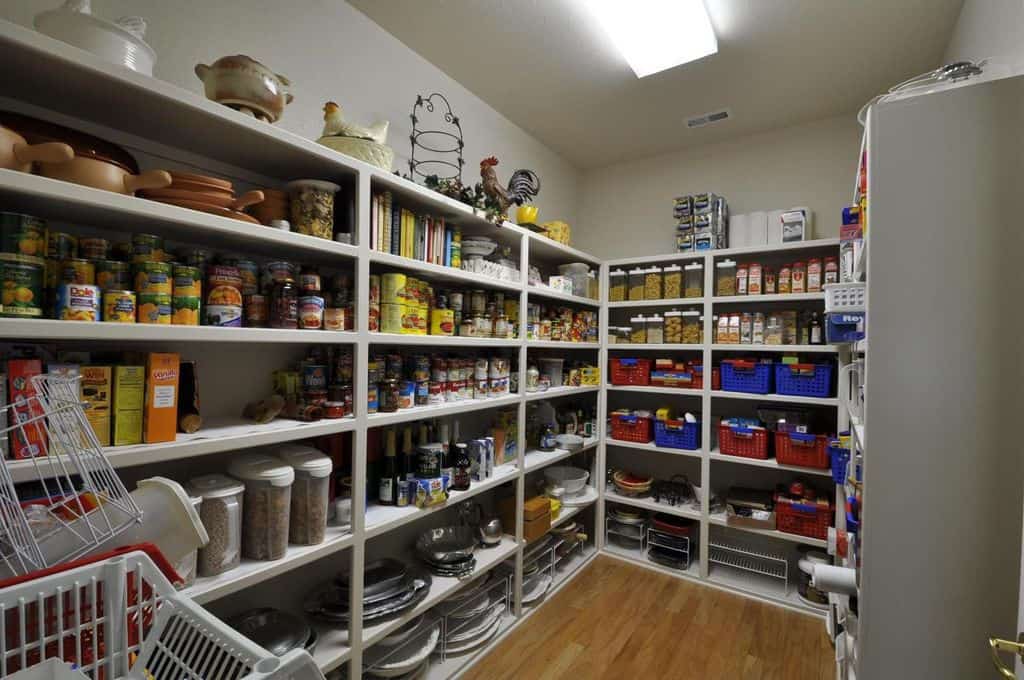
DIY Pantry Installation
Pros:
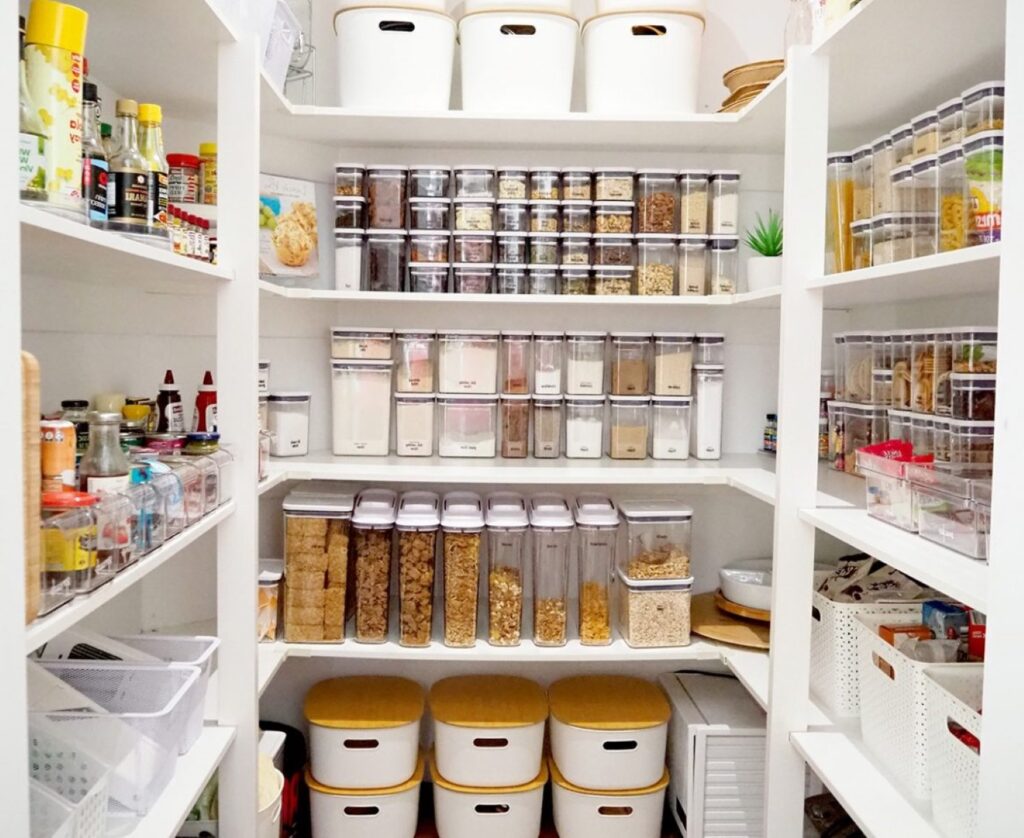
- Cost-Effective: DIY installation can save you money on labor costs.
- Customization: You have complete control over the design and materials.
- Personal Satisfaction: Completing a DIY project can be rewarding.
Cons:
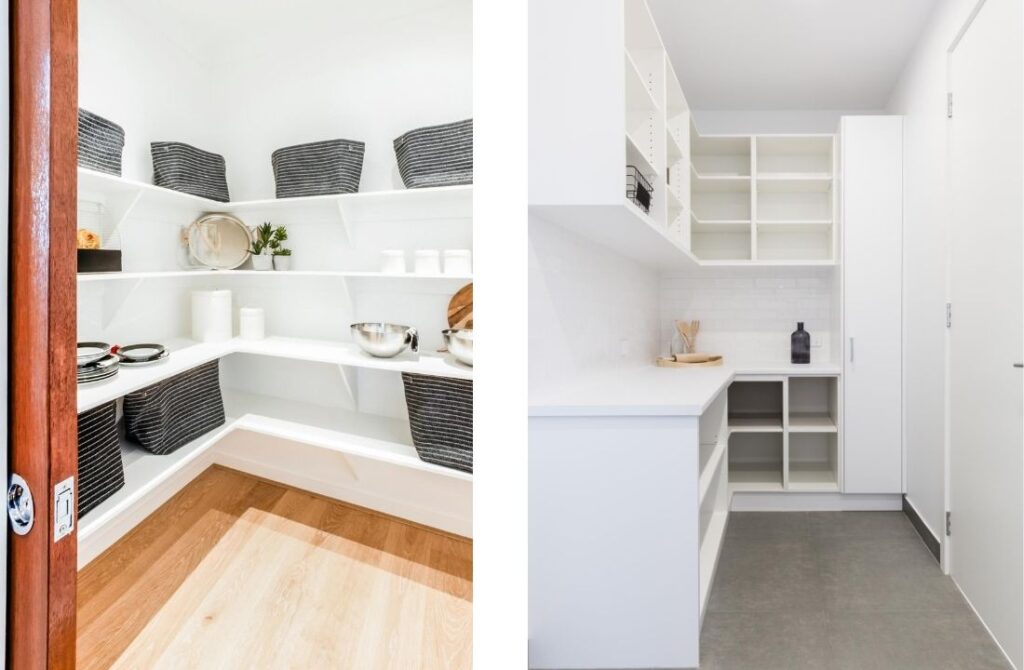
- Time-Consuming: DIY installation can take a significant amount of time.
- Requires Skill: You need to have basic carpentry and construction skills.
- Potential for Errors: Mistakes can be costly and time-consuming to fix.
Professional Pantry Installation
Pros:
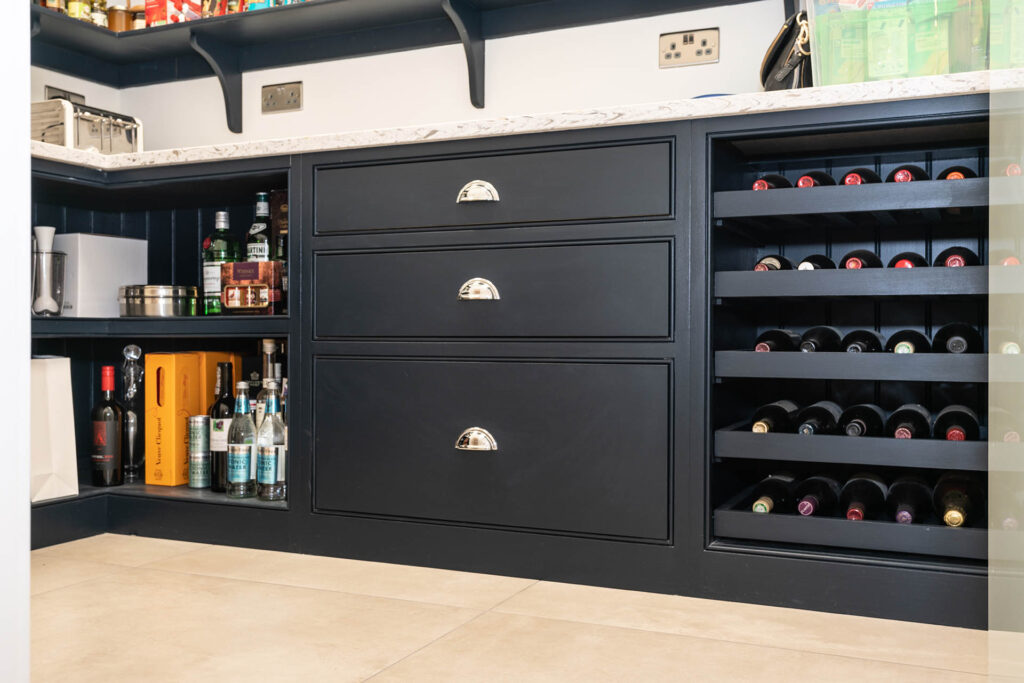
- Expertise: Professional installers have the knowledge and experience to ensure a high-quality installation.
- Time-Saving: Professional installation can be completed much faster than DIY.
- Guaranteed Results: Professional installers typically offer a warranty on their work.
Cons:
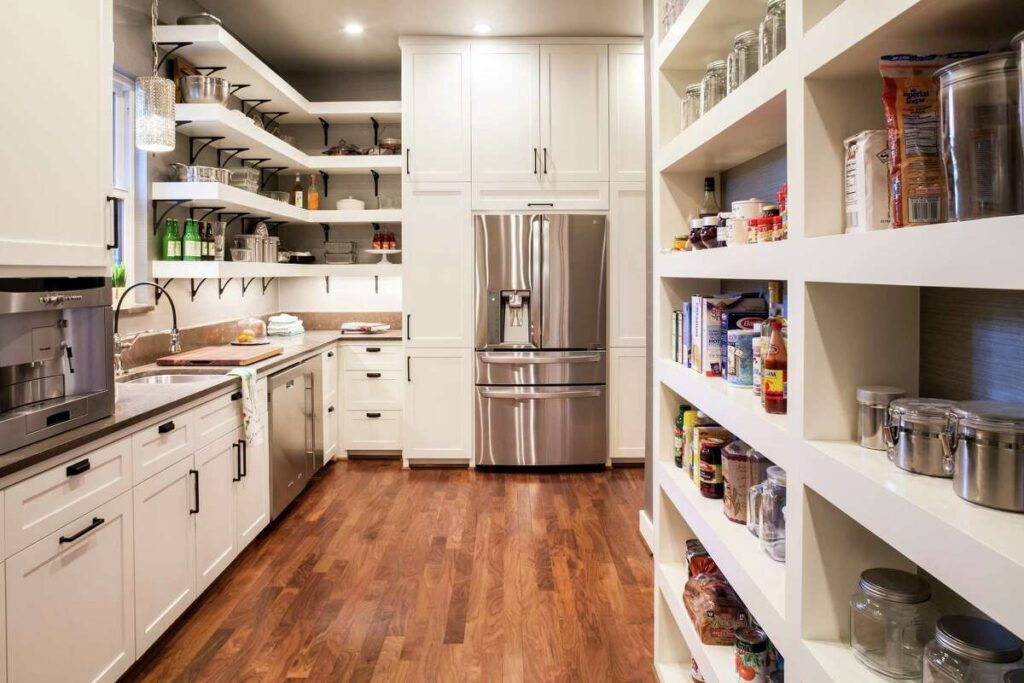
- More Expensive: Professional installation can be more expensive than DIY.
- Less Control: You may have less control over the design and materials.
Final Thoughts: Elevating Your Kitchen with a Walk-In Pantry
A well-designed and organized walk-in pantry is an investment that will pay off in spades. It will transform your kitchen into a more functional, efficient, and enjoyable space. By carefully considering your needs, planning your layout, and implementing effective organization strategies, you can create a walk-in pantry that is both beautiful and practical.
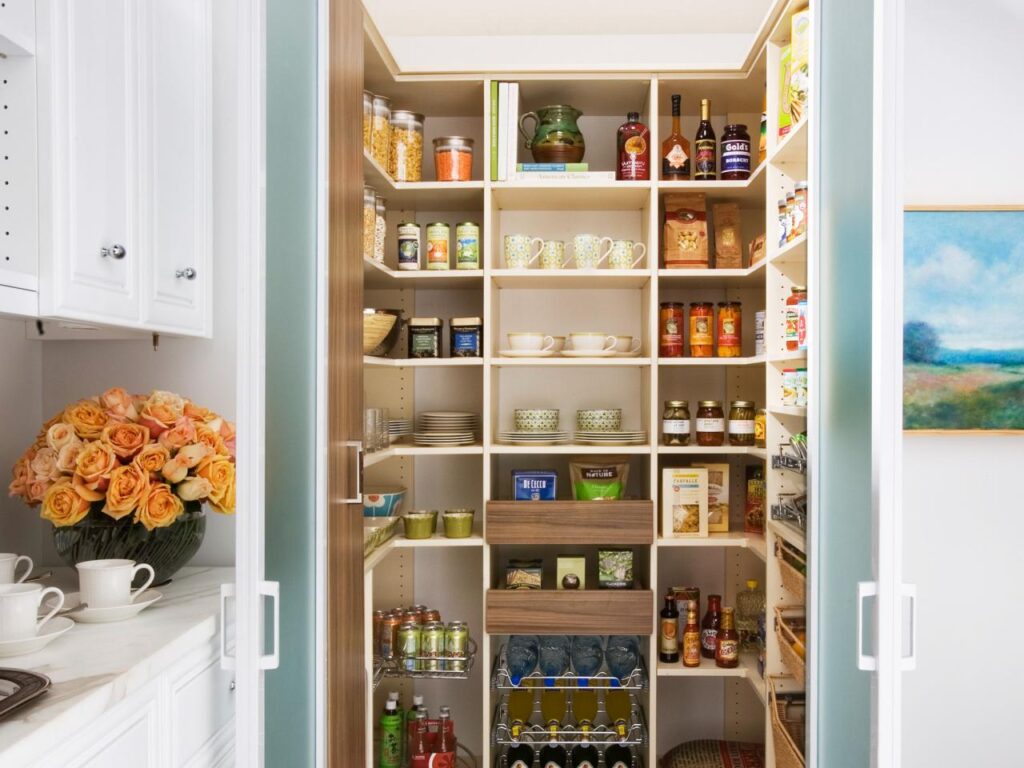
So, take the plunge and create the pantry of your dreams! You’ll wonder how you ever lived without it. Imagine a kitchen where everything is in its place, where you can easily find what you need, and where meal preparation is a breeze. That’s the power of a well-organized walk-in pantry. It’s not just storage; it’s a lifestyle upgrade.
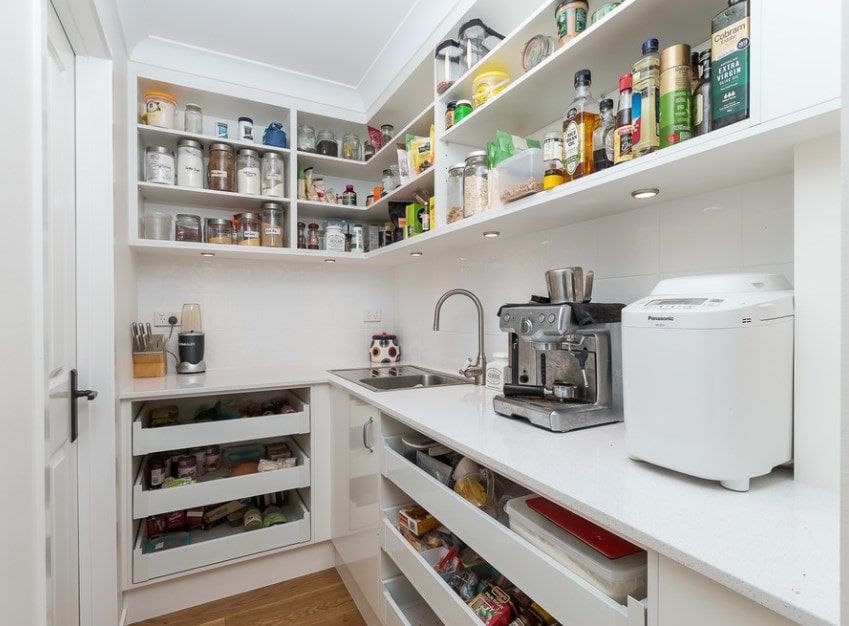
From showcasing that vintage spice rack to keeping your grandmother’s cookie recipes easily accessible, a pantry is more than shelves and containers. It’s a way to bring order and joy back into the culinary center of your home. So, what are you waiting for? Start planning your walk-in pantry perfection today!
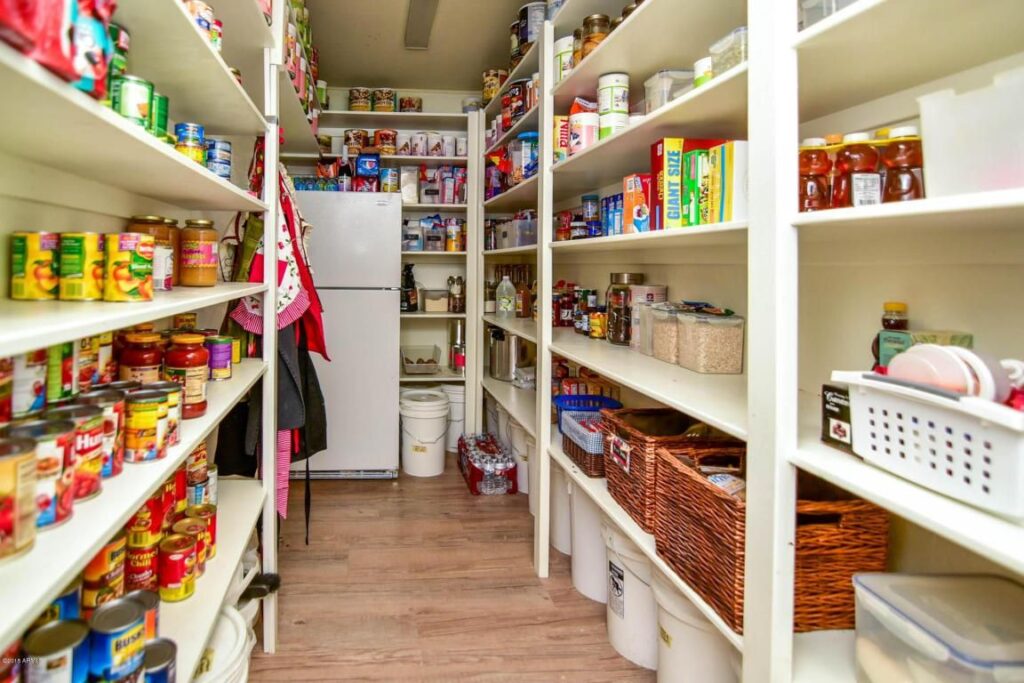
 Nimila
Nimila
